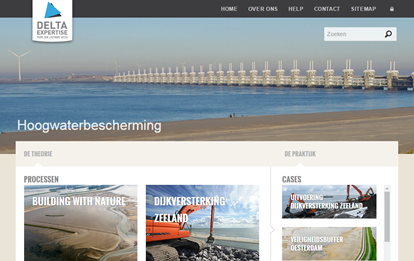Implementation of the Body of Knowledge and Skills
EMont has been implemented in Semantic MediaWiki (SMW) (Y. koren, 1 januari 2014) to publish BoKS on the web. According to the SMW website:
Semantic MediaWiki is a free, open-source extension to MediaWiki—the wiki software that powers Wikipedia—that lets you store and query data within the wiki’s pages. Semantic MediaWiki is also a full-fledged framework, in conjunction with many spinoff extensions that can turn a wiki into a powerful and flexible knowledge management system. All data created within SMW can easily be published via the Semantic Web, allowing other systems to use this data seamlessly.
In our experience, SMW is one of the most flexible platforms for structuring knowledge. SMW supports the fundamental semantic web proposition: subject —predicate→ object, albeit in a slightly different form. A wiki page takes the role of subject. It contains zero or more predicates, which are called properties in SMW, to relate to objects. An object may be another wiki page or a value, such as a number, date, string or coordinate. The data can be queried with a simple, but restricted query language. A triple store can be attached to SMW turning the wiki into an endpoint that can be queried from the outside or within the wiki itself using SPARQL. It must be noted, however, that SPARQL support is not fully realized yet in SMW.
A semantic wiki can be regarded as an ordinary wiki, such as Wikipedia, and a semantic database in one. This is powerful combination because the formality implied by an ontology is balanced against the free format of a wiki page. Ontological elements, such as activities and contexts (situations and roles), can be described textually augmented with pictures and references to relevant resources. In addition, a semantic wiki can be turned into a website comprised of a number of wiki pages. The navigation structure of the (wiki) website is derived automatically from the EMont semantic relations. By changing semantic relations, the navigation structure is changed accordingly. Therefore, the (wiki) website is always consistently up to date.
Besides using the semantic relations for navigation purposes, concept maps can also be used to navigate. A concept map can be turned in a clickable image in a wiki page. By clicking on a concept, the user is lead to a corresponding page in which the concept, such as a context or activity, is discussed. Usually, we simplify the concept maps and make them more graphic-oriented in order to not overwhelm the user.
It is relatively easy to replace the standard look & feel of SMW, the so-called vector skin (Wikipedia look), with a tailor-made skin. See Figure below as an example. It shows the portal of an expertise management system (wiki) about coastal protection (hoogwaterbescherming in Dutch).

- Lees hiervoor:
- Lees hierna:
Referenties
- Hoogwaterbescherming, Deltaexpertise.nl, 29 mei 2020.
- Semantic Mediawiki, SMW, 26 november 2015.
- Working with MediaWiki, Y. koren, 2nd Edition, WikiWorks Press, New York, 1 januari 2014.
